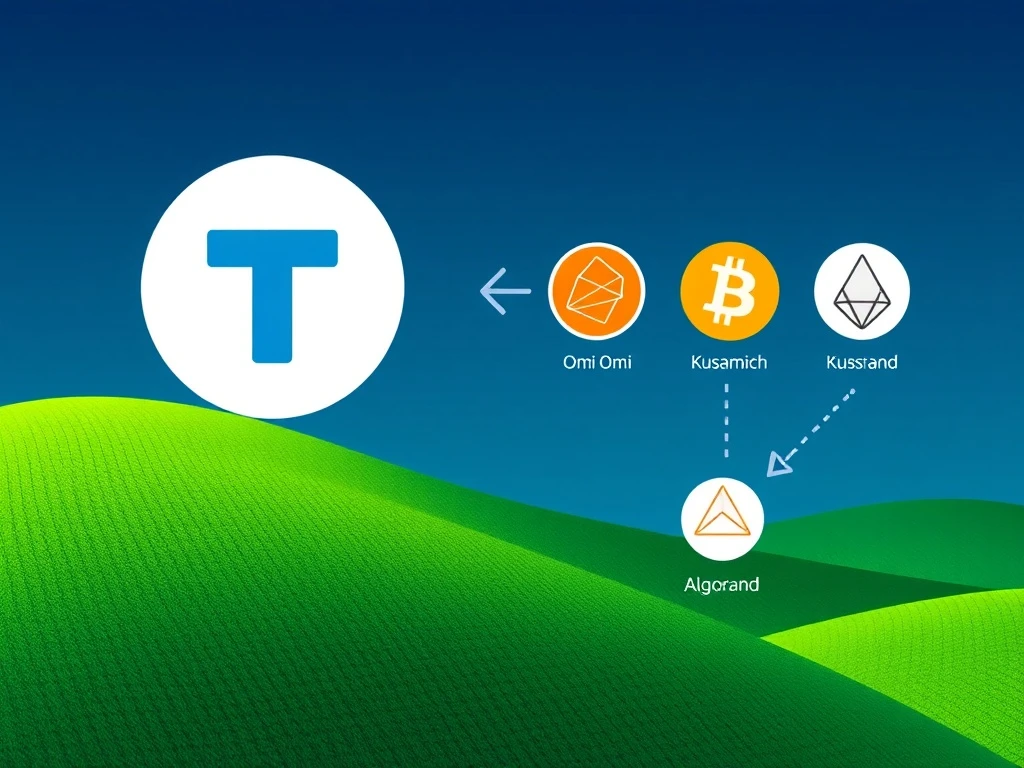Strategic Shift: Tether Sunsets USDT Support on Five Blockchains

Major news from the stablecoin giant: Tether is making a significant move that impacts users holding its USDT stablecoin on several networks. The company announced it will discontinue support for redemptions of USDT on five legacy blockchain platforms starting September 1st. This decision, described as a strategic refocusing of resources, signals a pivot towards networks deemed more scalable and active.
Why is Tether Discontinuing Support on These Blockchains?
Tether CEO Paolo Ardoino stated that sunsetting support for these chains allows the company to concentrate on platforms offering greater scalability, developer activity, and community engagement. This move isn’t sudden; the discontinuance has been in the works for some time, with Tether having previously halted new issuance on these networks.
The affected blockchains are:
- Omni Layer
- Bitcoin Cash SLP
- Kusama
- EOS (now Vaulta)
- Algorand
For Omni Layer specifically, Tether cited low usage of USDT on the network as a reason for the discontinuance.
Timeline of Tether’s Strategic Moves
This latest step is part of a phased approach. In August 2023, Tether stopped issuing new USDT on Omni Layer, Kusama, and Bitcoin Cash SLP. This was followed by halting minting on EOS and Algorand in June 2024. The September 1st date marks the full discontinuance of redemption support for existing USDT on these chains.
Understanding the Impact: USDT Balances on Affected Chains
USDT remains the largest stablecoin globally by market capitalization, currently standing at $139.4 billion. While this figure is massive, the balances on the affected chains represent a small fraction of the total circulation. Here’s a look at the net circulation on these networks:
- Omni Layer: $82.9 million
- Bitcoin Cash SLP: $986,500
- Kusama: $240,000
- EOS: $4.2 million
- Algorand: $841,600
These figures highlight that the majority of USDT circulation resides on other, more actively supported networks.
What Does This Mean for Algorand Users?
Algorand users might be wondering how this affects them. The Algorand Foundation stated that users should experience no disruption because Tether stopped offering new USDT on their network last year, giving users a year to complete redemptions. They noted that stablecoin volumes on Algorand have continued to grow since Tether‘s initial decision.
It’s worth noting that USDT was the third-most-popular stablecoin on Algorand, trailing behind USDC, which holds a significantly larger market cap on the network.
Why Stablecoins and Blockchain Focus Matter
Stablecoins like USDT are crucial bridges between traditional finance and the crypto world. Their stability makes them vital for trading, lending, and payments within the blockchain ecosystem. Tether‘s decision to streamline its supported blockchains reflects the evolving landscape of the crypto space, where focus is shifting towards networks offering better performance and development opportunities.
This strategic move allows Tether to allocate resources more effectively, potentially leading to enhanced support and development on the platforms they continue to back. For users on the discontinued chains, the key takeaway is the September 1st deadline for redemptions.
In Summary
Tether‘s decision to discontinue USDT support on five legacy blockchains is a calculated step to optimize its operations and focus on more promising networks. While affecting a relatively small portion of the total USDT supply, this move highlights the dynamic nature of the blockchain industry and the ongoing competition among platforms for developer and user activity. Users on Omni Layer, Bitcoin Cash SLP, Kusama, EOS, and Algorand holding USDT should take note of the September 1st deadline for redemptions.









